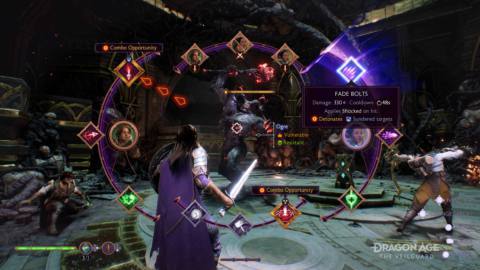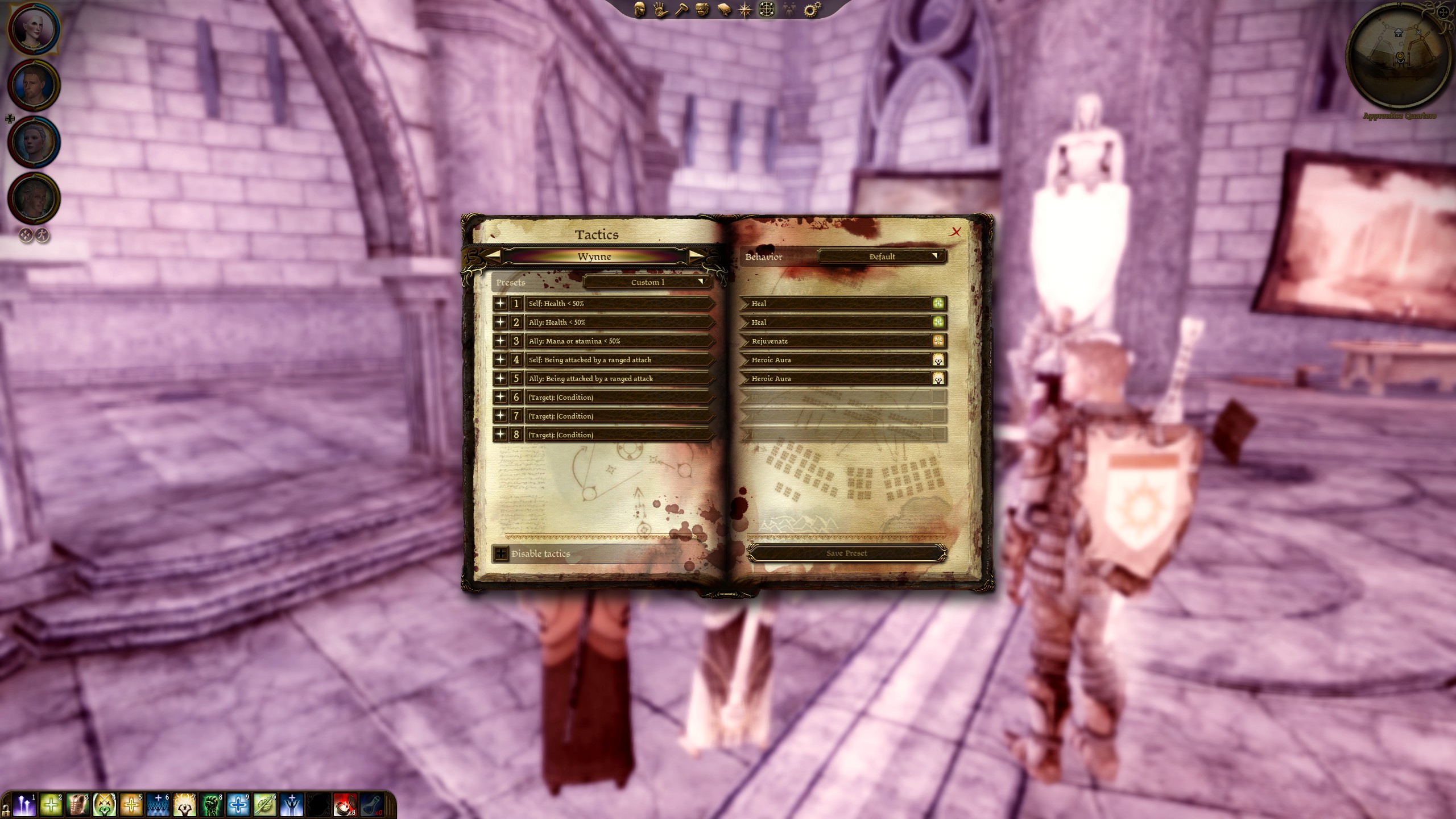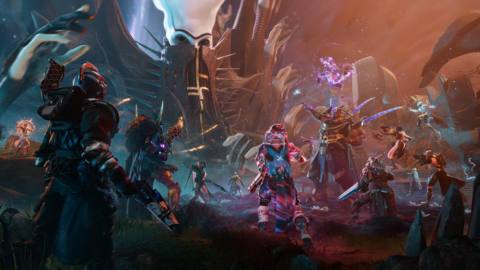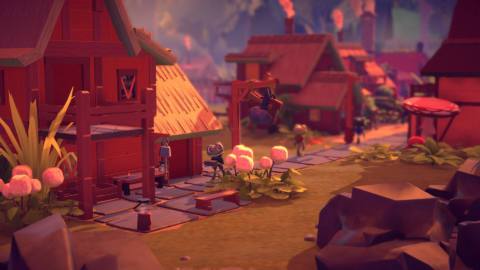Leading up to the launch of Dragon Age: The Veilguard this autumn, BioWare continues to share details about all the things that are changing in the fourth game of the series. One very obvious departure is its extremely action-forward combat, subject of plenty of debate among fans (including my own group chats). In particular, Veilguard will narrow the focus of combat so that we’ll only have direct control of our player character Rook—a change that was made, BioWare says, because the faster pace of combat made it difficult for players to manage the full party.
As we saw in the initial Veilguard gameplay reveal, combat is indeed pretty fast. Characters sling spells and acrobatically dive around in a way that Joshua Wolens compared to Mass Effect when seeing it in person. There’s still a real-time-with-pause element to it in which you can bring up your radial menu to fire off your own skills or order your companions to use one of theirs, but the ability to fight in real time is restricted to Rook. All your companions will be doing their own thing alongside you.

“We wanted you to feel like you are Rook—you’re in this world, you’re really focused on your actions,” game director Corinne Busche told Edge Magazine in its newest issue #401. “We very much wanted the companions to feel like they, as fully realised characters, are in control of their own actions.”
That sounds to me like a very convenient narrative explanation for what was likely a technical decision, not a storytelling one. Which, to Edge’s credit, it did push Busche on.
“I will admit that, on paper, if you just read that you have no ability to control your companions, it might feel like something was taken away. But in our testing and validating with players, what we find is they’re more engaged than ever,” Busche said.
“This is a much higher actions-per-minute game. It is more technically demanding on the player. So when we tried allowing you full control of your companions as well, what we’ve found is it wasn’t actually adding to the experience. In fact, in some ways it was detrimental, given the demanding nature of just controlling your own character.”
I’m a bit surprised that BioWare couldn’t find any way to make swapping control of party members feel rewarding. One of the biggest games of last year was an RPG that asks players to control every member of the party, albeit in a turn-based format, so I know fans are plenty willing to tackle a challenge for the sake of a great cast and story.
Since we are losing full party control, I do wish that BioWare had taken the opportunity to bring back the party tactics menu from Dragon: Age Origins whereby you could give each party member standing orders to use certain skills when surrounded by enemies, or use a healing item when below a certain health percentage. Maybe I’m the only one that misses that grognard-y shit (just kidding: I know Online Editor Fraser Brown does too).

Eminently reasonable as this all sounds, it does make clear that the combat parts of Veilguard are intended to attract someone who isn’t me. My FPS-enjoyer colleague Morgan Park, for instance, has told me this is the first Dragon Age game he might be interested in trying. I suppose this is the cost of new converts.
I’ll hold out hope that the fantasy world I’ve loved for 15 years and its new characters are enough to drag me kicking and screaming through the combat. Elsewhere in Edge’s new interview, BioWare also says it learned lessons from Anthem about sticking to what it’s best at: singleplayer RPGs. That’s one thing I’m unreservedly happy to hear.






